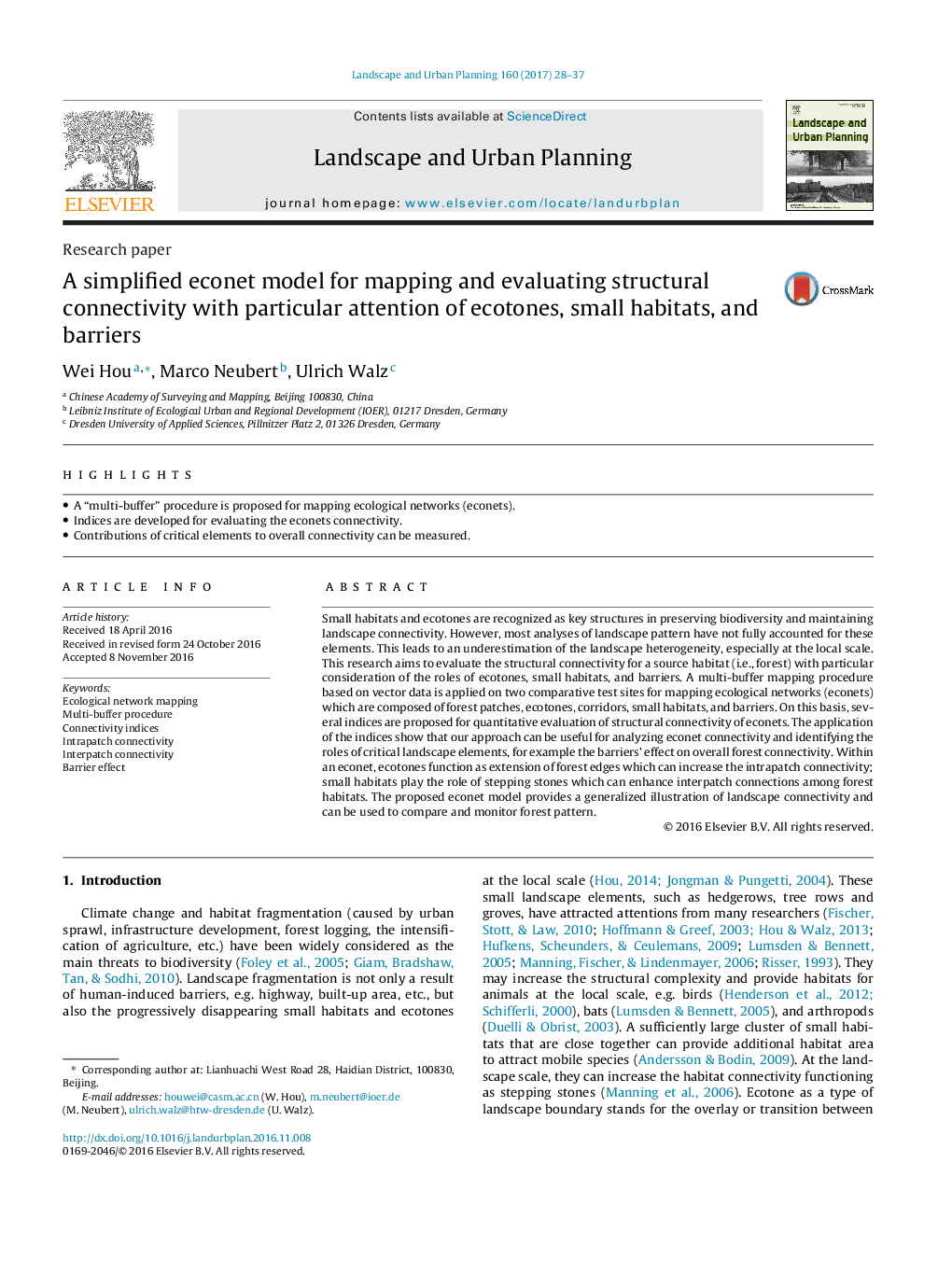| Article ID | Journal | Published Year | Pages | File Type |
|---|---|---|---|---|
| 5115075 | Landscape and Urban Planning | 2017 | 10 Pages |
Abstract
Small habitats and ecotones are recognized as key structures in preserving biodiversity and maintaining landscape connectivity. However, most analyses of landscape pattern have not fully accounted for these elements. This leads to an underestimation of the landscape heterogeneity, especially at the local scale. This research aims to evaluate the structural connectivity for a source habitat (i.e., forest) with particular consideration of the roles of ecotones, small habitats, and barriers. A multi-buffer mapping procedure based on vector data is applied on two comparative test sites for mapping ecological networks (econets) which are composed of forest patches, ecotones, corridors, small habitats, and barriers. On this basis, several indices are proposed for quantitative evaluation of structural connectivity of econets. The application of the indices show that our approach can be useful for analyzing econet connectivity and identifying the roles of critical landscape elements, for example the barriers' effect on overall forest connectivity. Within an econet, ecotones function as extension of forest edges which can increase the intrapatch connectivity; small habitats play the role of stepping stones which can enhance interpatch connections among forest habitats. The proposed econet model provides a generalized illustration of landscape connectivity and can be used to compare and monitor forest pattern.
Keywords
Related Topics
Life Sciences
Agricultural and Biological Sciences
Ecology, Evolution, Behavior and Systematics
Authors
Wei Hou, Marco Neubert, Ulrich Walz,
